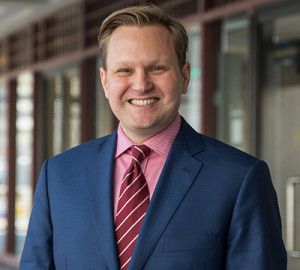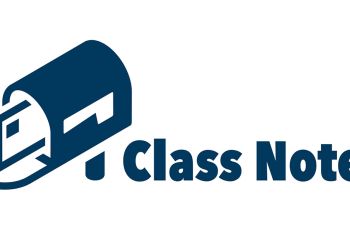Reamer L. Bushardt, Pharm.D., P.A.-C., DFAAPA, brings a wealth of expertise to his role as senior associate dean for health sciences at the George Washington University (GW) School of Medicine and Health Sciences (SMHS). Bushardt is both a pharmacist and a physician assistant (P.A.) with experience in caring for underserved communities in rural areas of the Carolinas.

Bushardt earned a degree in pharmaceutical sciences and a doctor of pharmacy from the University of South Carolina. After practicing as a pharmacist in a cancer center, he trained as a physician assistant at the Medical University of South Carolina and practiced in rural primary care. Bushardt began his career in academic medicine in the Palmetto State, but he is no stranger to Washington, D.C. He serves as editor-in-chief for the Journal of the American Academy of Physician Assistants (JAAPA), based in Alexandria, Virginia. Bushardt says he regularly spent time between meetings learning about and exploring the District.
“Through my editorial work and as a visiting scholar, I met some of the faculty at GW, and I was really attracted to the breadth and depth of their talents,” he says. “I’ve also had a very strong interest in learning more about health policy and about the innovative ways we can train health professionals and health care researchers — [areas where] the GW community is very much at the forefront.”
Although Bushardt is still setting up his office in Foggy Bottom and adjusting to life in D.C., his vision for the future of the dozens of health sciences academic programs at SMHS is already forming. Here, he discusses his career path from pharmaceutical science to higher education and his aspirations for health sciences at GW.
Q: What is your vision for the future of health sciences at GW?
A: A vision for the future of health sciences is not something I needed to create. It already lives within the faculty, staff, and students across the health sciences programs. My job is to help them realize their strengths and come together as a diverse family of health sciences researchers and educators. Health sciences hosts 45 different academic programs, and many are unique with regard to curricula and program goals. Our health sciences students experience GW very differently — some as residential learners in Foggy Bottom or at the Virginia Science and Technology Campus (VSTC), others from all over the world in online learning communities, some within postgraduate programs in various hospital and health systems, or even during active military service via educational partnerships with the U.S. military. There is no one educational paradigm for health sciences.
My challenge is to build a shared identity that leverages our collective strengths. This challenge calls us to prioritize and even more fully embrace interprofessionalism as a value across every facet of what we do. It is about advancing translational research and pioneering new and innovative ways to prepare health care professionals. It is taking our combined knowledge from practice, from policy, from research, from public health, and from the classroom, and creating an inventive approach to reach our goals — an approach that is distinctively health sciences. I really enjoy breaking silos and bringing together talent in ways it might not naturally combine, so I am beyond excited to be here at GW.
Q: What drew you to pharmacy?
A: Mentoring and apprenticing drew me to pharmacy. My father is a community pharmacist and leader in that profession, particularly in South Carolina. He worked for 40 years as a small-business owner. At age 10 or 11, I started helping him in his drugstores. I loved the atmosphere. My father is such a warm and incredibly kind person. He forged incredible relationships with his patients, and humbly worked behind the scenes to help them solve problems that got in the way of healthier, productive lives. I aspired to be like him (I still do, actually). My professional identity as a pharmacist started forming well before I attended my first pharmacology or therapeutics class.
Q: After earning your Pharm.D., you went on to train as a P.A. What interested you in the P.A. profession?
A: My first job as a pharmacist was in a cancer center in South Carolina, primarily working with socioeconomically disadvantaged patients with cancer. There was a small group of oncologists, and I was a clinical pharmacist embedded with that team. I would support patients who developed adverse effects to treatment or who were balancing chronic medical issues along with their treatment for cancer. This partnership with physicians and with patients felt very natural. My physician colleagues were very focused on trying to cure the patients from their cancer, and they welcomed my help to address adverse effects or chronic medical illnesses. After doing that for a little while, I wanted to advance my diagnostic skills, and the P.A. profession really spoke to me. It offered me what I felt I needed.
Q: Recently a new health sciences department was created at the VSTC — the Department of Integrated Health Sciences. Do you see more growth at VSTC in the future?
A: The VSTC is an incredible asset for the university and region. This campus is a focus for much of our targeted growth in health sciences. The synergy realized between schools with VSTC-based programs is excellent. The School of Medicine and Health Sciences has strong collaborations with the College of Professional Studies and the College of Nursing, which both maintain strong contingencies there as well.
As a newcomer to GW, I am thrilled to have the opportunity to work in Northern Virginia, which is surrounded by leading companies and forward-thinking industries in technology and data management. The health sciences team regularly meets with dynamic industry executives there to learn about how their fields are evolving; to talk with them about partnerships in workforce development and innovation; and to explore new professions and lines of study that can continue to stimulate advances in education, research, and service. We are not trying to reinvent any wheels. If you want to transform discoveries into products and services that benefit society, then cultivating meaningful partnerships between higher education and industry is the right move.
Q: What got you interested in being editor-in-chief of JAAPA?
A: I’ve always enjoyed writing. One of my grandmothers was an English teacher, and during elementary and middle school, I would go after school to spend time with my grandparents. My grandmother would help me with my homework, with special attention for any writing assignments. She loved a red pen like any good English teacher, and I can still see her fine, red cursive tightly positioned between my original lines. Inadvertently, she offered me this boot camp experience in writing.
When I took my first job in academia at the Medical University of South Carolina as a … faculty member, I was thrust into this space where writing grants and scholarly articles was an expectation, and I enjoyed it. … I started peer reviewing and writing for JAAPA, and the editor asked if I would consider being a regular writer and part of the editorial board, so I did that. When the editor-in-chief retired several years later, I was approached about taking that position.
Q: What made you decide to pursue a career in academic medicine, and what does it mean to you to play a role in the education of future medical professionals?
A: Growing up in a rural, underserved community shaped that desire. In my hometown, there were limited community resources and a small number of health care providers, so access to care was a problem. I did not have the context to understand it when I was younger, but the tremendous amount of health inequity there is very apparent to me now. Following in my father’s career path as a pharmacist and subsequently practicing as a P.A.-pharmacist in rural communities, I had a personal desire to expand access to care. Rural primary care is hard work, but it can be very fulfilling.
As faculty and an administrator in academic medicine, I still strive to expand access to care and help patients and families avoid the struggle to find a caring, capable provider. This passion fuels my work in education and research. Over the past several years, I have worked harder to help innovate how care is delivered, so we can provide it more affordably, more safely, and with better coordination. This pursuit also involves leadership to help shape health policy and modernize the regulatory environment so all health professionals can practice to the full extent of their training and experience, which I believe is a practical strategy to improve access, lower the overall cost of care, and combat the current geographic misdistribution of health care professionals in the United States.
The talented students, dedicated staff, and passionate faculty within SMHS give me enormous hope for the future. I feel fortunate to be a part of such a distinguished university, and am leveraging every opportunity to build collaborations and benefit from the broad base of expertise in education and research at GW. Washington, D.C., seems like a long way from my beginning in rural South Carolina, but at the same time, it already feels a lot like home.



